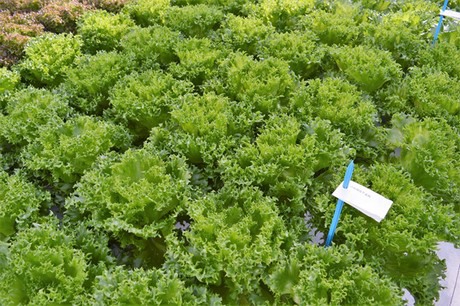What do Nunhems, Signify*, Gege Machinebouw, Erfgoed Nederland and Van der Valk Horti Systems have in common? They are all major patent applicants within their market segment. This is evident from the report 'Patents in the Netherlands' in which the Rijksdienst voor Ondernemend Nederland (Dutch Enterprise Agency) has summarized the figures for the period 2013-2017.

Plant breeders' rights are also widely used in horticulture. Here a lettuce variety in the demo greenhouse of Nunhems, now BASF Vegetable Seeds. Photo: own archive GroentenNieuws.
It is the third report in a series of investigations by the Netherlands Patent Office. As in the previous editions, this report also looks back a little further in time. Patents are - generally - published 18 months after filing, so no data is available from the past 2 years.
An important comment on the figures is that not all innovations in horticulture are protected by a patent. Confidentiality, plant breeders' rights, trademark rights and copyright are other intellectual property rights that are used in this sector, among others, to a greater or lesser extent. In the top sector of horticulture, for example, plant breeders' rights are used by many more companies and secrecy is also, as can be read in the report, 'in many cases a valuable alternative to patents'.
*in a European context, as a lighting company, Signify outsmarted all other parties in that market in 2020 with the most patent applications.
